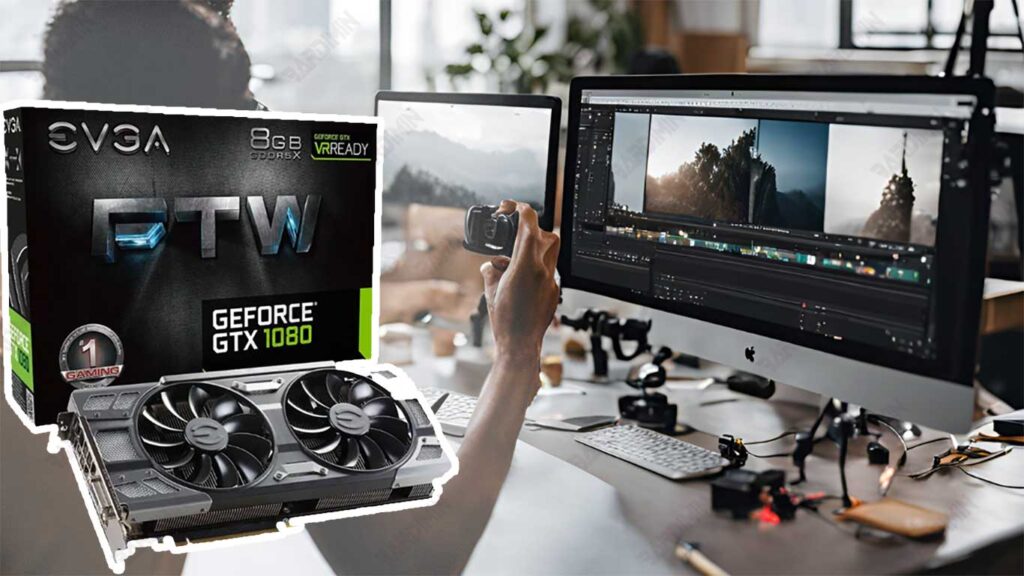In today’s computing era, graphics cards or Video Card have a very important role in computer systems. This component is not just an add-on, but also a key element that affects the visual quality and overall performance of the device, especially in applications that require high graphics such as gaming, graphic design, or video editing.
A graphics card, also known as a Video Card or GPU (Graphics Processing Unit), is computer hardware that processes visual data and converts it into a graphical display on a monitor screen. This process involves intricate calculations to ensure the image looks clear, sharp, and responsive.
A Video Card is designed to reduce the CPU workload in processing graphics data. Without a Video Card, the CPU has to work harder to produce a visual display, which can degrade overall system performance. Thus, Video Card serves as the “visual brain” of the computer, providing a smoother and more enjoyable user experience.

Main Components of the Graphics Card
1. Video Chipset
The video chipset is the main part of the graphics card, often referred to as the “brain” that manages all the graphics processes in the computer. This component functions to process visual data and convert it into image signals that can be displayed on the screen.
These chipsets are made by large companies such as NVIDIA, AMD (dulu ATI), and Matrox, each of which has different advantages and market focuses.
- NVIDIA: Known for GeForce products aimed at gaming and premium graphics cards. They also produce Quadro for professional needs such as graphic design and 3D animation.
- AMD: Offers Radeon products, which are NVIDIA’s main competitors. AMD is known for its high performance at a more affordable price.
- Matrox: Focus more on graphics cards for special needs such as multi-monitor displays and use in professional environments.
Video chipsets have a direct effect on the quality and speed of graphics processing. Some factors that affect graphics performance include:
- Clock Speed: Measures how fast the chipset processes data. The higher the speed, the smoother the graphics are displayed.
- GPU architecture: The technology behind the chipset that determines the efficiency and ability to process graphics, such as ray tracing or machine learning (AI).
- Compatibility with Technology: For example, support for APIs such as DirectX, OpenGL, or Vulkan.
Examples of Famous Brands and Their Chipsets
NVIDIA:
- GeForce RTX Series: Supports ray tracing technology for more realistic graphics.
- Quadro RTX Series: Designed for professional graphic design needs.
AMD:
- Radeon RX Series: Graphics card for high-performance gaming.
- Radeon Pro Series: Devoted to workstations and professional needs.
Matrox:
- Matrox C-Series: Known for multi-monitor solutions with good stability.
- Matrox G-Series: Focus on industrial and professional applications.
2. RAM on the Graphics Card
The RAM on a graphics card, known as VRAM (Video RAM), is a special memory for storing graphics data temporarily while it is being processed by the GPU. There are several types of RAM used in graphics cards, including:
a. GDDR (Graphics Double Data Rate)
The most common type of RAM in modern graphics cards.
- GDDR5: Usually used on entry-to-mid-range graphics cards.
- GDDR6: Faster and more efficient, often used on the latest and high-end graphics cards.
- GDDR6X: The most advanced version, providing higher bandwidth for excellent graphics performance.
b. HBM (High Bandwidth Memory)
RAM technology with high speed and low power consumption, is commonly used in premium graphics cards such as AMD Radeon Vega and Pro series.
c. DDR (Double Data Rate)
Standard RAM is sometimes used on low-performance graphics cards.

